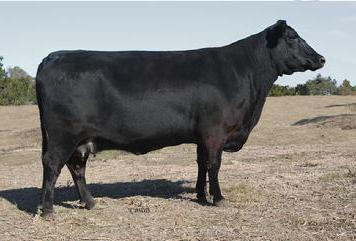Shvitskaya breed of cows: a variety of livestock
You rarely meet a person who does not likemilk or products of its processing. Therefore, in livestock production, individuals that are able to give as much milk as the Schwick breed of cows are very popular.
Origin
The native land of this breed is Switzerland. There was a breed from short-haired cattle, which has long been inhabited in mountainous areas, - its remains are still found during excavations. The breed was created by careful selection and selection for a long time in conditions of improved content. As a result, animals were obtained, adapted to local conditions.

At the very beginning of the creation of the breed, the goal was notonly improvement of dairy and meat indicators, but also obtaining animals that could perform agricultural work. Over time, when the opportunity to use cows in work was no longer considered, the selection was aimed only at the development of the productivity of meat and milk. Much attention was paid to the color of cows. Gradually, the breed penetrated into Germany, Austria and Italy. From the beginning of the 19th century, the breed was exported to European countries and America.
Differences in different countries
Since the breeding was conducted in countries,differing in terms of natural and economic conditions, the Schwick breed of cows from different countries differ from each other. Significant changes have been made in the physique and productivity of animals. So, in Germany and Austria the limbs of the animals are lower, and the body is smaller. France and Italy focused on obtaining large animals with high fattening qualities and good milk yield. Swiss and French animals have a yield of 6.3-6.7 thousand kg per year. In this case, milk fat content to 4.1% with a protein content of about 3.4%. The Austrian Schwick cow gives less milk - about 5-5,5 thousand kg.

Influence of content on yield
Differences in productivity are visible in Switzerlandanimals that are on different pastures. Thus, animals from flat farms, grazing in lush fertile valleys, show higher productivity than the same breed, but living in mountainous areas. At the same time, the fat content remains the same.
Application
In European countries, they obtained up to 10,000 kg of milk per year from a cow. Fat content can reach 5%. Most often the milk of the Swiss cows is used for the production of hard cheeses of high quality.

Most of the European livestock hasmilky-meat type. In the US, the cows of this breed came in 1869. There are animals of a dairy type with correct high limbs, with a broad but flat chest, dense muscles. The mass of female specimens is 700-750 kg, for men - 1000-1200 kg. Productivity of adult animals is 7-8 thousand kg, up to 4,2% of fat content. The brown Swiss breed of cows is one of six bred in the US for milk production.
The Schwick cow in Russia
In our country, this breed hit the end of the 19thcentury. They began to import it into landlord farms, because the peasants could not meet the high demands of the cow for feed. At that time, imports were supplied not only by the bulls, but also by the uterus. From the beginning of the 20th century, the producers of this breed began to be kept at handicrafts. In addition to purebred breeding, bulls also participated in improving local breeds. The best livestock of the early 20th century was bred in the Smolensk region (modern), in the stalls of the Moscow Academy of Agriculture. Tribal animals from here were transported throughout the country to improve local breeds.
The main direction of the Russian Schwick cow is dairy. However, in some farms, meat or meat-and-milk types are derived.
Description
Milk Schwitz breed of cows has a stretchedtorso, angular forms. The muscles of these animals are poorly developed, the mass is smaller, but higher milk yields. Milk-meat type of cows is proportionally complex, has good musculature. By weight and productivity is not much different from cows of milk type.
The prevalent brown color with different shades: from light to dark brown. The cow of Schwick, whose description must meet the standards, has a characteristic sign - blond hair around the nose. The nose mirror itself should resemble dark lead in color. The upper trunk should be more light colored. Bulls have a darker coloration of the head, neck and anterior part of the trunk.

Purchase
The sale of Swiss breeds of cows is made aswithin countries, and for export. For large livestock farms it is important to periodically purchase animals from other regions or countries. It is necessary to prevent the degeneration of the breed, which occurs with a constant crossing within one herd. In addition, it is also important for improving performance.

Private farms prefer to purchase cowsmeat-and-milk direction, in order to realize the needs of their locality simultaneously in milk and meat. In state and private farms of our country milk is used not only for the production of dairy products, but also for consumption in pure form.
</ p>







